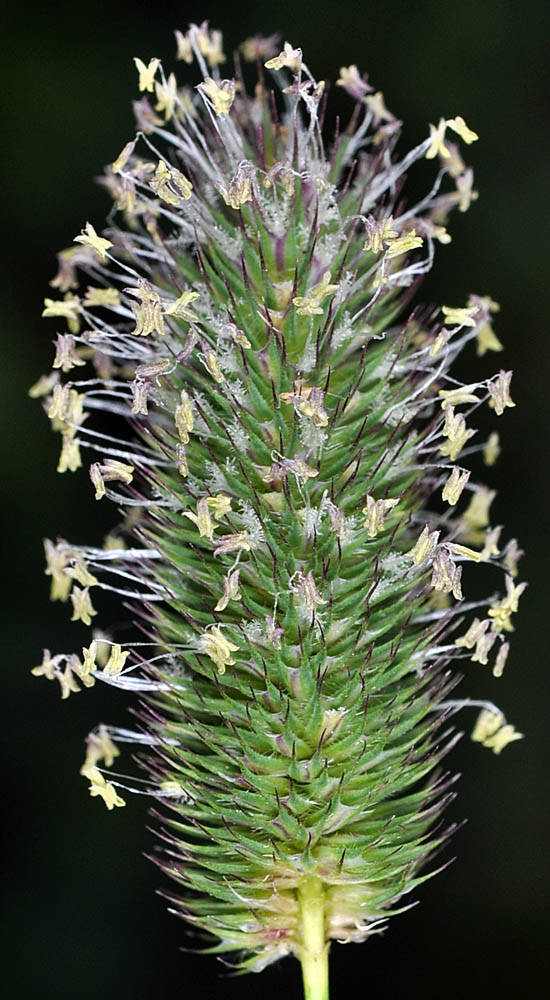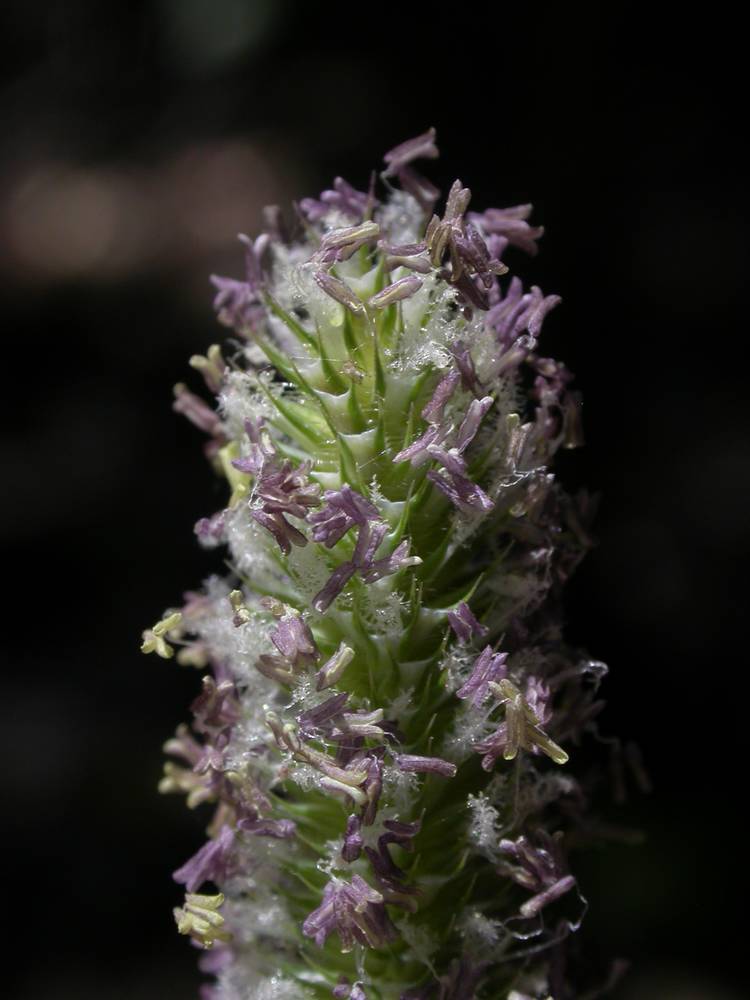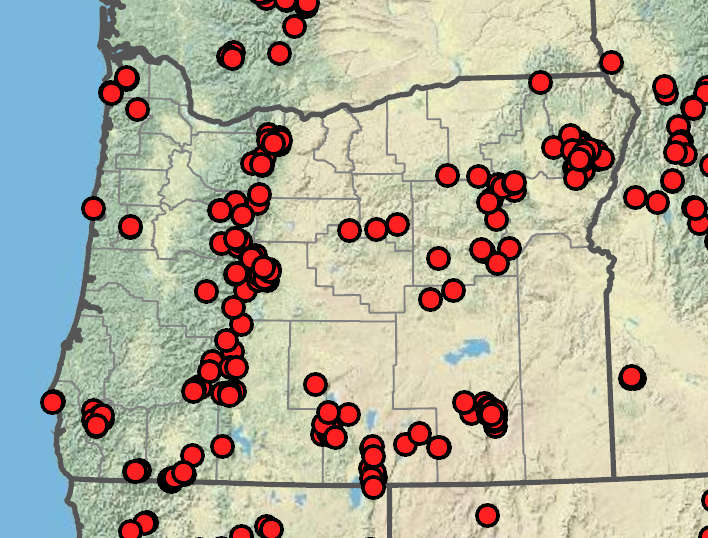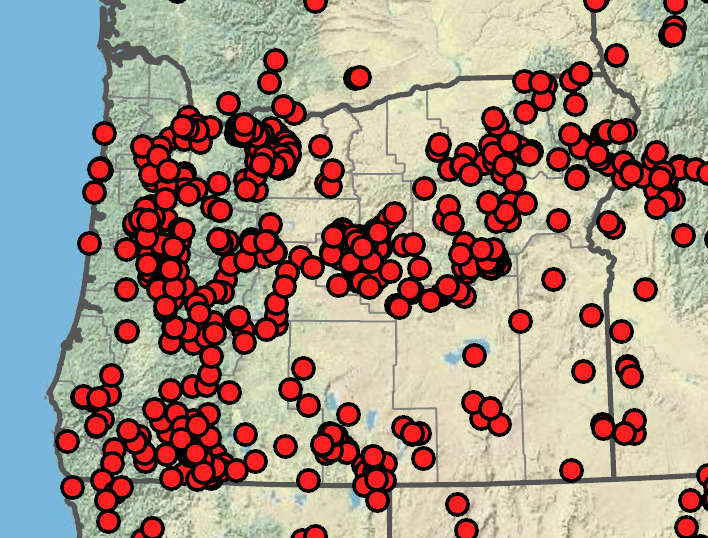Phleum alpinum
Phleum pratense
alpine timothy
timothy
with lower internodes not enlarged or bulbous.
with lower internodes often enlarged or bulbous.
sheaths of uppermost culm leaves inflated;
blades flat; to 17 cm × 4–7 mm.
sheaths of uppermost culm leaves not inflated;
blades flat; to 45 cm × 4–8(10)mm, glabrous.
ovoid, lanceolate, or oblong, 1.5–3 times as long as wide, 1–6 cm × 5–12 mm.
cylindric, 5–20 times as long as wide; (3)5–10(16)cm × 5–7.5(10) mm.
2.5–4.5 mm, 3-veined;
sides scabrous;
keels with spreading hairs;
tips awned; awns 1.5– 2.5(3.2) mm.
3–4 mm, 3-veined;
sides usually puberulent;
keels with spreading hairs;
tips awned; awns 1–2 mm.
1.7–2.5 mm, 5–7-veined, mostly glabrous;
keels with spreading hairs;
tips acute; awnless.
1.2–2 mm with 5–7 veins, membranous, usually puberulent;
tips acute; awnless.
1–2 mm.
1.6– 2.3 mm.
=14, 28.
=14, 28, 42.
Phleum alpinum
Phleum pratense
Moist mountain meadows, streamsides, coastal headlands. 50–2800m. BR, BW, Casc, CR, ECas, Est, Sisk. CA, ID, NV, WA; western and northern North America; South America, circumboreal. Native.
Phleum alpinum is a small grass with a dense, spike-like inflorescence and inflated sheaths on the uppermost leaf. Phleum pratense is a taller grass with longer inflorescences and less distinctly inflated sheaths. It usually grows at lower elevations, though there is an overlap in range.
Old fields, pastures, rangelands, and disturbed sites. 0–2300m. BR, BW, Casc, Col, CR, ECas, Lava, Sisk, WV. CA, ID, NV, WA; throughout North America; temperate regions worldwide. Exotic.
Phleum pratense is a common grass with a dense, spike-like inflorescence. It is similar to Alopecurus pratensis, a plant of generally wetter habitats, which has a softer inflorescence with tapered, awnless glumes. In Alopecurus, the spikelets disarticulate from the inflorescence axis when mature; those of P. pratense are persistent on the plant well into the fall.
Barbara Wilson, Richard Brainerd, Nick Otting
Barbara Wilson, Richard Brainerd, Nick Otting
- Local floras:
BC,
CA,
OR,
WA
- Local Web sites:
CalFlora,
CalPhotos,
Flora NW,
PNW Herbaria
WildflowerSearch
iNaturalist (observations)
USDA Plants Database
- LBJ Wildflower Center
- SEINet
- Plants of the World Online
- Encyclopedia of Life
- Wikipedia
- Google Image Search
- Local floras:
BC,
CA,
OR,
WA
- Local Web sites:
CalFlora,
CalPhotos,
Flora NW,
PNW Herbaria
WildflowerSearch
iNaturalist (observations)
USDA Plants Database
- LBJ Wildflower Center
- SEINet
- Plants of the World Online
- Encyclopedia of Life
- Wikipedia
- Google Image Search





